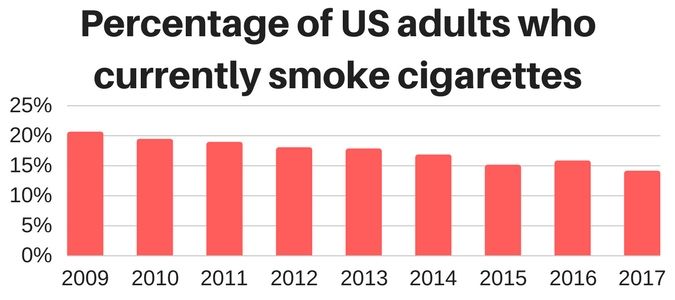US Residents Taking Measures for Better Health, Despite Obesity and Diabetes Rates
The survey estimates from the National Center for Health Statistics report that more people are vaccinating for flu and testing for HIV.
An early release of selected estimates from the National Center for Health Statistics (NCHS) interview survey reports that certain efforts to maintain health are trending positively in US residents.
The estimates, from data collected from January-September 2017, report that pneumococcal and influenza vaccination, physical activity, HIV testing, and cigarette smoking rates have improved in comparison to recent years.
Additionally, 66.5% of surveyed persons reported excellent or very good health (95% CI; 65.81 — 67.13). Though this is not a significant improvement from the 2016 rate (66.4%), it is a continued improvement from the 20-year low of 65.6% in 2011.

Surveyed persons aged 18 and older also estimated the lowest rate in 3 years of serious psychological distress experienced during the past 30 days (3.4% [95% CI; 3.15 — 3.68]).
Metrics for physical health were also improved. An estimated 53.8% (95% CI; 52.69 — 54.97) of adults aged 18 and over met the 2008 federal physical activity guidelines for aerobic activity. Researchers noted the rate had previously been stable from 1997-2006, then jumped to 51.7% in 2016. Though the estimated 2017 rate is the highest reported, every year’s final report drops from the estimate rate.
Vaccination rates — though varying severely among age groups— are also cumulatively climbing. Persons aged 18-49 years reported 34.8% influenza vaccination rates in late 2017 — a substantial jump from the sub-20% rate reported by the age group in the late 1990s.
Persons aged 50-64 reported 45.9% vaccination rate, and persons aged 65 and older reported a 69.8% rate. These rates are aligned with recent years’ reports, and remain a substantial increase from even 10 years ago.
Cigarette smoking rates among adults were reported at their lowest prevalence (14.1% [95% CI; 13.52 — 14.74]) in the last 20 years. It is still a more prevalent trait in men (16%) than women (12.4%), and is most commonly reported by persons aged 45-64 years (16.6%).

HIV testing rates also at its 20-year peak, as 41.1% of adults (95% CI; 40.0 — 42.17) reported having received the test before. This is the second consecutive year of that exact rate, and is a significant jump from the 31.8% rate reported in 1997.
Though these rates are promising, Jeannine Schiller, first author and lead statistician at NCHS, told MD Magazine that these results are mostly consistent with previous reports.
“When examined over the course of the past couple of decades, some of these results are quite striking,” Schiller said.

Schiller also noted that obesity and diabetes rates are also at 20-year highs — for the worse. The estimated 2017 rates for obesity in adults aged 20 or older reached 31.4% (95% CI; 30.57 — 32.31), an immediate rise from the previous high reported in 2016 (30.6%).
Diabetes diagnoses were estimated in 9.5% (95% CI; 9.0 — 9.96) of adults aged 18 and older. Though it is not statistically significant compared to the 2016 rate of 9.4%, it is notably greater than the 1997 rate of 5.1%.
“It is true that diagnosed diabetes prevalence has been on the rise in the past 2 decades, but the rate has slowed in recent years compared to the early 2000s,” Schiller said.
The slower diabetes rate, coupled with stabilized rates of excellent or very good health and serious psychological distress, show that overall US health may be improving — have ways to go still.
Schiller preached patience, noting it takes years to see trends change trajectory.
“As previously noted, there were several indicators that showed progress in the right direction,” Schiller said.
The results, "Early Release of Selected Estimates Based on Data From the January—September 2017 National Health Interview Survey," were published online through the US Centers for Disease Control and Prevention last week.